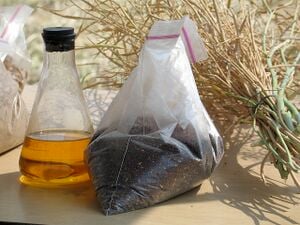
Rapeseed oil
is one of the oldest known vegetable oils. There are both edible and industrial forms produced from rapeseed, the seed of several cultivars of the plant family Brassicaceae. Historically, it was restricted as a food oil due to its content of erucic acid, which in laboratory studies was shown to be damaging to the cardiac muscle of laboratory animals in high quantities and which imparts a bitter taste, and glucosinolates, which made many parts of the plant less nutritious in animal feed. Rapeseed oil from standard cultivars can contain up to 54% erucic acid.
Canola oil
is a food-grade version derived from rapeseed cultivars specifically bred for low erucic acid content. It is also known as low erucic acid rapeseed (LEAR) oil and is generally recognized as safe by the United States Food and Drug Administration. Canola oil is limited by government regulation to a maximum of 2% erucic acid by weight in the US and the EU, with special regulations for infant food. These low levels of erucic acid do not cause harm in humans.
In commerce, non-food varieties are typically called colza oil.
Rapeseed is extensively cultivated in Canada, France, Belgium, Ireland, the United Kingdom, the United States, the Netherlands, Germany, Denmark, Poland, and Slovenia. In France and Denmark especially, the extraction of the oil is an important industry.